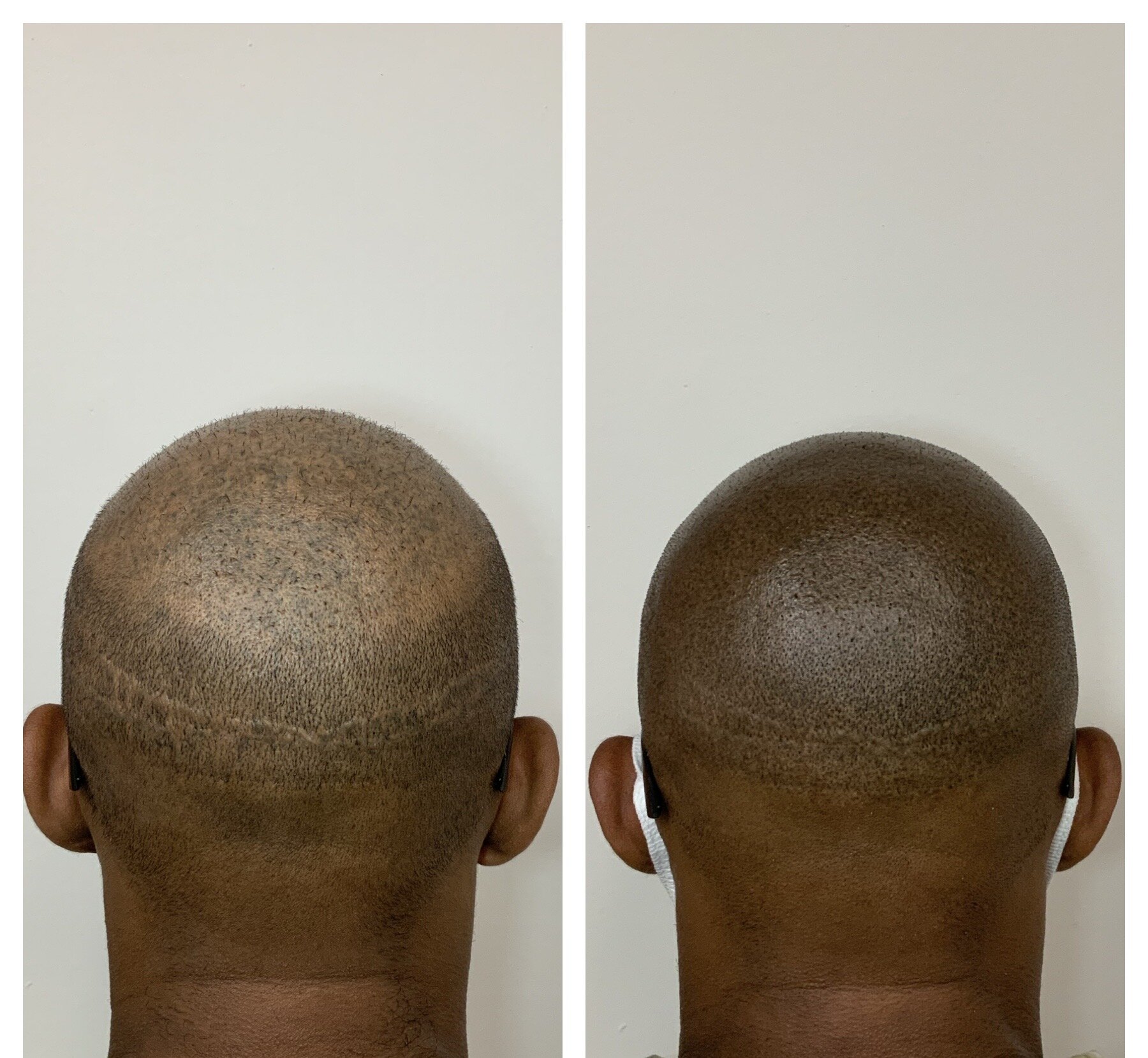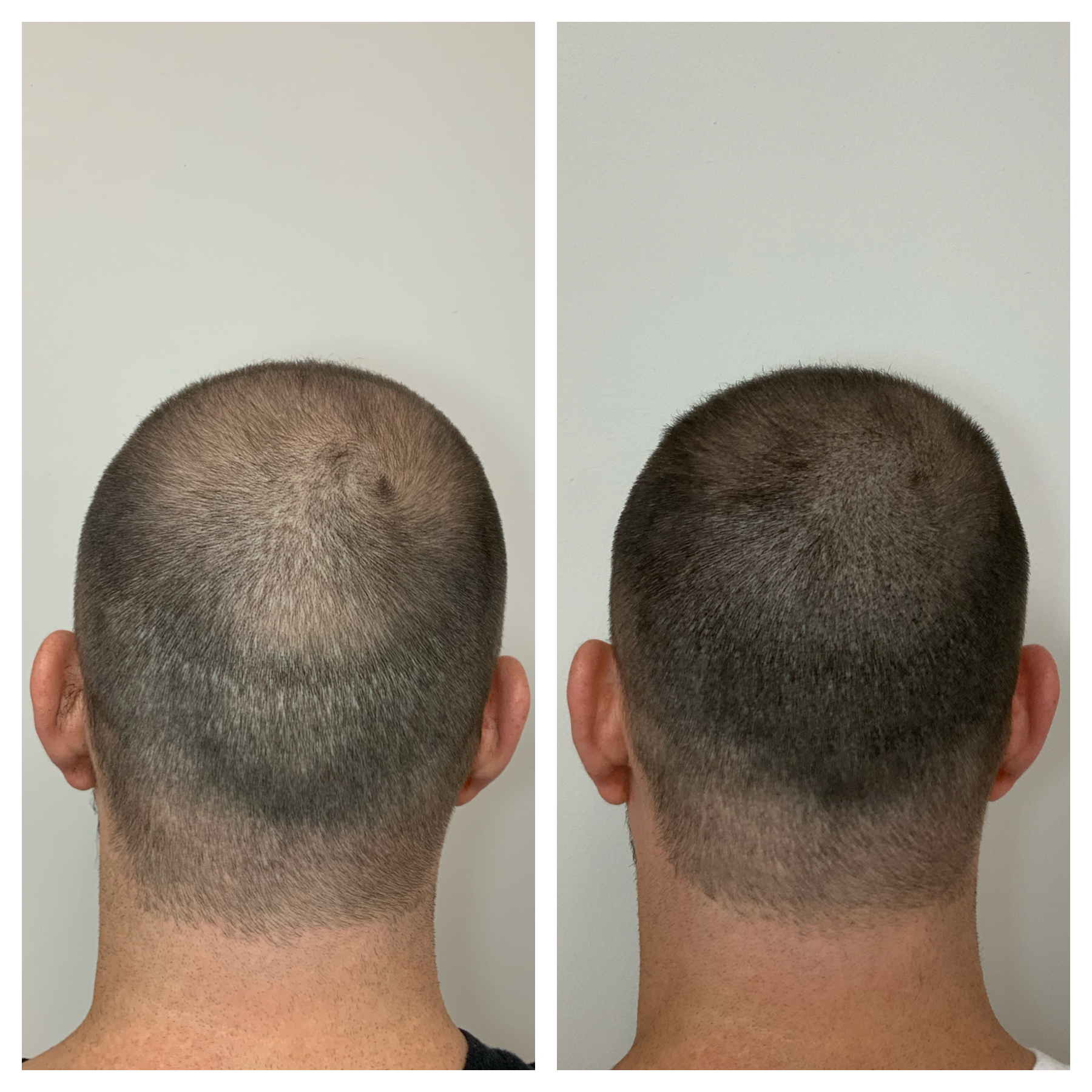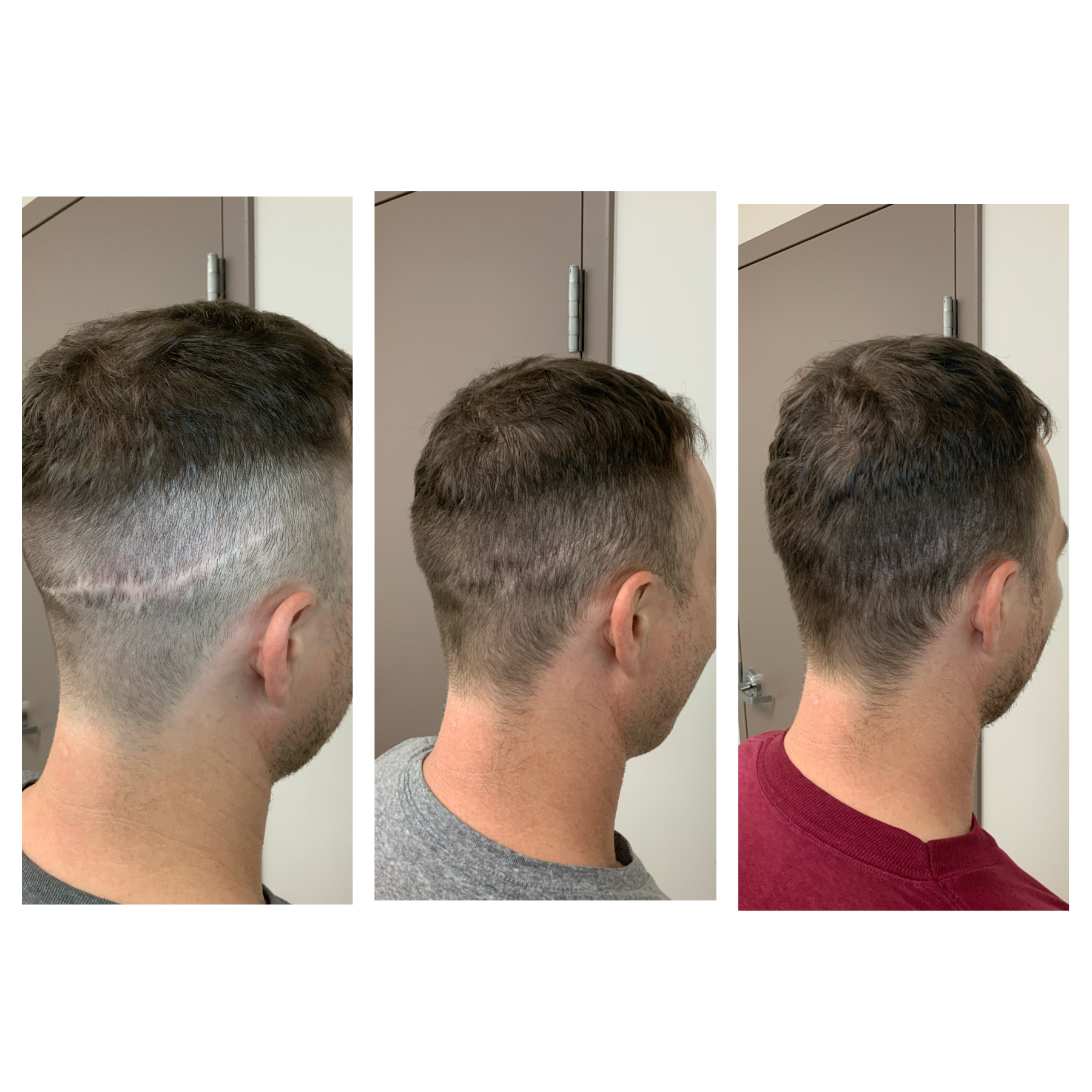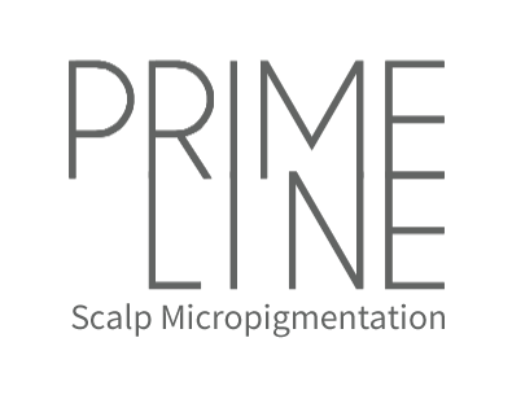
Hair Transplant Scar Camouflage
Scalp Micropigmention is one of the best ways to camouflage and conceal hair transplant scars or any type of scarring on the scalp. Not to mention, restoring and regaining your confidence!
Scalp Micropigmentation can fill in the areas of the scalp that was missed or rejected by the transplant. The addition of extra pigment among existing or regrown hair enhances the procedure giving the illusion of a fuller head of hair and a more youthful appearance. SMP is less invasive and more affordable than a hair transplant.
The treatment process varies from client to client because scar tissue is more unpredictable than undamaged skin. Scars tend to soak up the pigment, resulting in excessive fading. It’s no problem of course, but it does mean more sessions are usually required to treat a scar versus a regular Scalp Micropigmentation treatment for male pattern baldness.
















Types of Scarring:
Follicular Unit Transplantation (FUT) surgery – FUT scars are the most obvious and are usually located at the back of the head and sometimes on the side. Some men have multiple scars, as the result of multiple procedures.
Follicular Unit Extraction (FUE) – This hair transplantation method takes individual groups of healthy hair follicles unaffected by male pattern baldness and grafts them to the area of the scalp that needs it. Ideally, the transplanted hair will take root and begin to grow on its own again indefinitely.
While Follicular Unit Extraction does not leave the same large, distinct scar as Strip Excision Harvesting, some recipients complain of circular white scarring at the site of the transplant.
The Key Difference:
No method is perfect but Scalp Micropigmentation is the perfect option to compliment and fill in the areas of the scalp that was missed or rejected by the transplant. The addition of extra pigment among existing or regrown hair enhances the procedure giving the illusion of a fuller head of hair and a more youthful appearance.
The closer the scar tissue is to surrounding skin in terms of its color, texture and level of prominence or indentation, the better the scar will camouflage. Smaller, cleaner, tidier scars hide better too.
Because scar tissue is so different from healthy skin tissue it also reacts differently to pigmentation. Melanin and collagen play key parts in creating scar tissue, influencing the way the pigment will receive and retain pigmentation.
